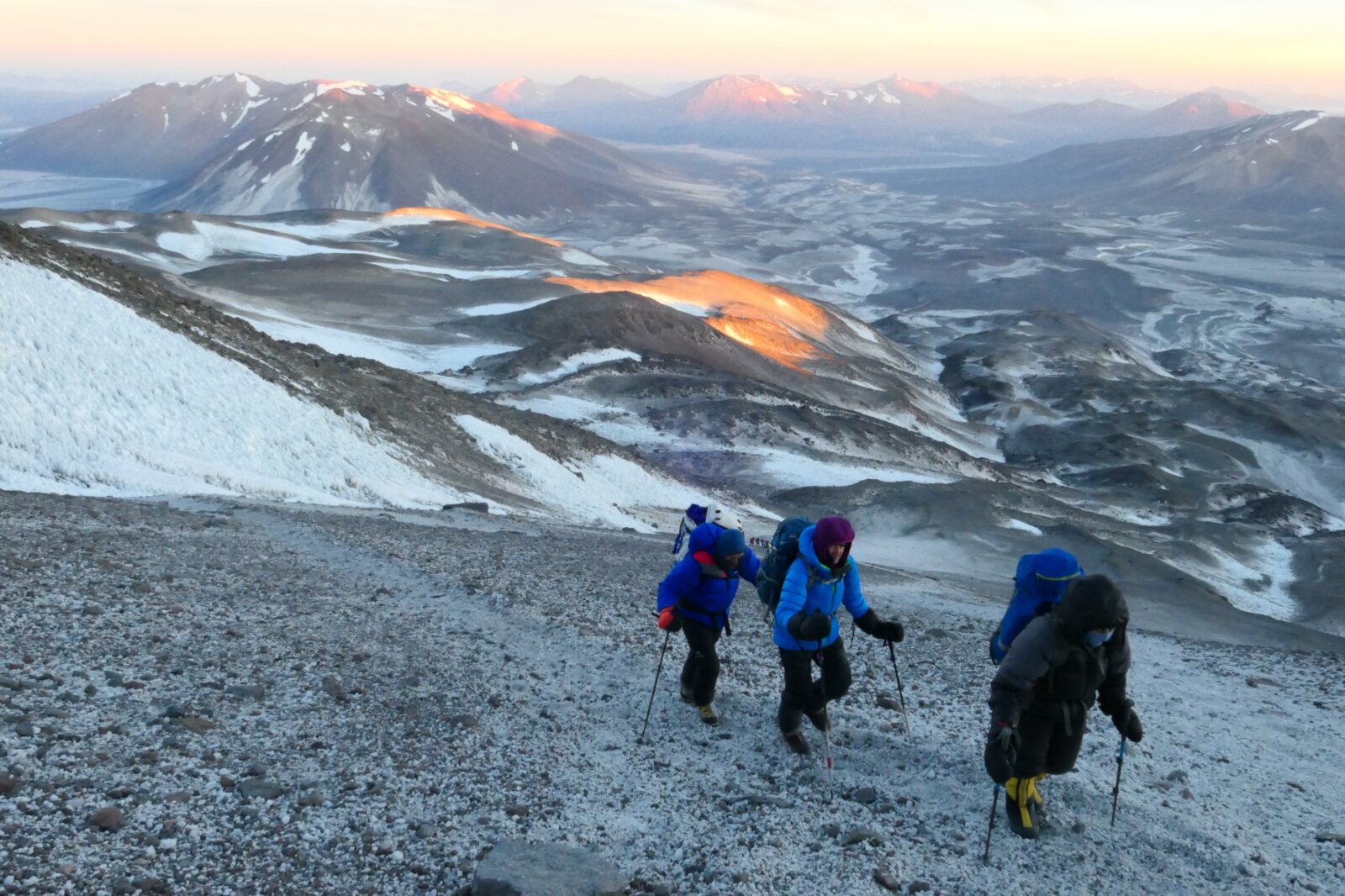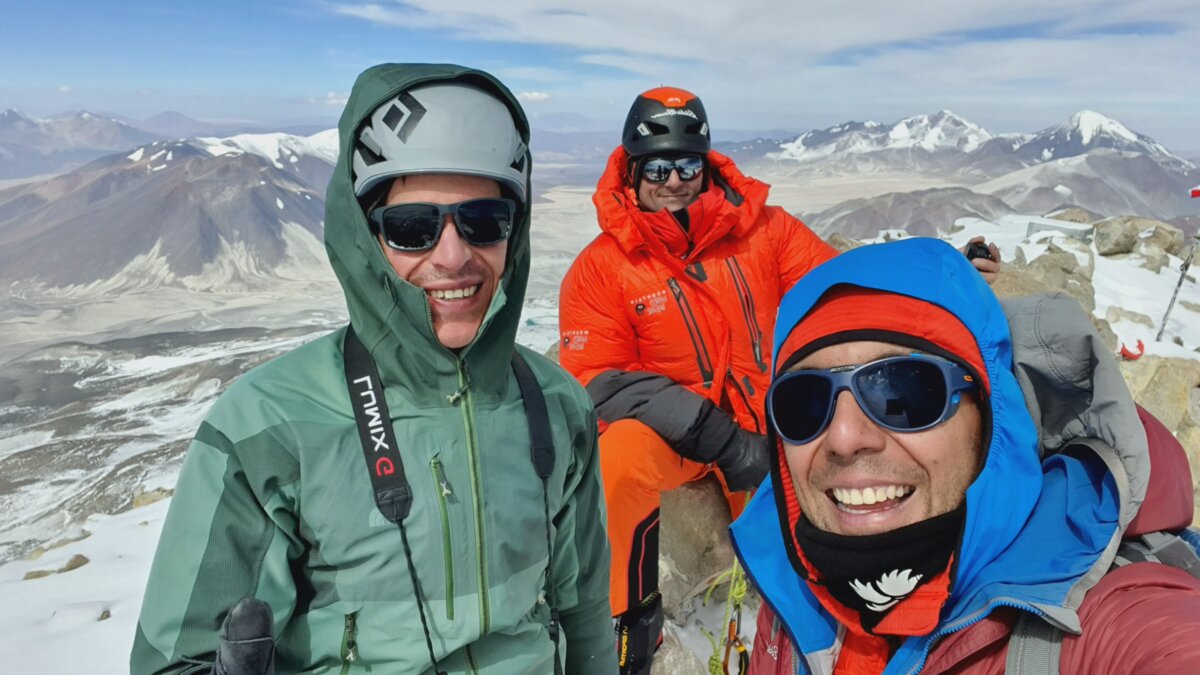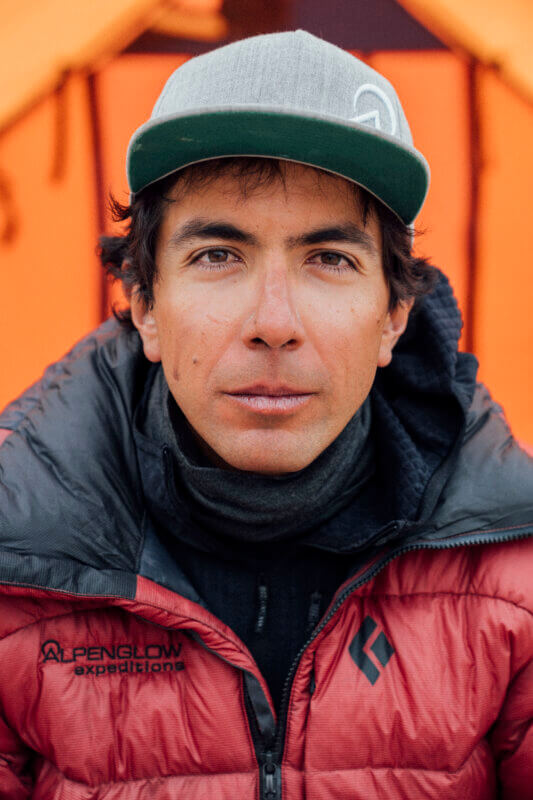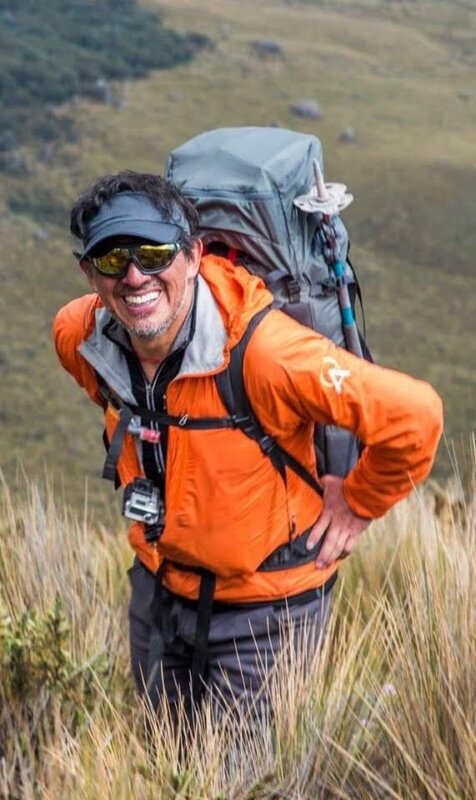Climb Ojos Del Salado


Ojos De Salado Rapid Ascent™ Expedition
Our Ojos Del Salado expedition takes our two decades of experience and our innovative Rapid Ascent™ Approach to create a remarkably fast expedition to a 7,000m peak; in the best style possible.
- Rapid Ascent™ Approach
- Certified and Professional Mountain Guides
- Quality Logistics and Mountain Infrastructure
- Transport and Lodging
- Expedition Doctor on Call
- Office Staff Support

This expedition is a combination of climbing one of the highest peaks in South America with Alpenglow’s Rapid Ascent™ program to create the ideal 9-day climbing trip.
By utilizing Hypoxico‘s altitude training tents at home for 4-weeks prior to the expedition, along with unparalleled logistics in Chile perfected over decades of leading expeditions to the greater ranges of the world, we can provide a world-class expedition to a remote volcano in roughly half the time it normally takes to climb this peak.
Ojos del Salado – The “Eyes of Salt”
Ojos del Salado is the highest active volcano in the world, and towers over the altiplano at a breathtaking 22,615’/6,893m. Ojos is also the second highest mountain in the southern hemisphere, falling just 200’ short of nearby Aconcagua. Ojos del Salado is situated on the border of Chile and Argentina. The name, meaning “Eyes of Salt”, describes the round salt lagoons that are found on the side of the volcano. These lagoons are home to flamingos who fish for algae and krill in the salt waters. At 14,400’/4,400m above sea level, Laguna Verde is actually a thermal spring fed by the volcanic activity in the area. The crater lake at the top of the Ojos del Salado mountain sits at 20,960’/6,390m, making it the highest lake in the world. At 22,615’/6,893m, the volcano feels remote but remains easily accessible. Other peaks of similar size in Alaska and the Himalaya require weeks just to reach a basecamp, whereas Alpenglow climbers arrive safely, summit, and depart in just 9 days.
Ojos Del Salado Expedition Overview
It all starts with Rapid Ascent™
The expedition to Ojos del Salado begins with an at-home routine of pre-acclimatizing for 28 days prior to Day 1 of the expedition itinerary. By utilizing Hypoxico tents and following a carefully-outlined schedule, you’ll be slowly increasing your oxygen efficiency at approximated altitudes up to 16,490’/5,025m. Alpenglow Expeditions handles the shipping and receiving of the tent unit. All you have to do is set it up in your home and follow the prescribed schedule that our Expedition Doctor created for you.
Climbing Ojos Del Salado
Climbers meet in Chile’s capital of Santiago. After a night to settle in and meet the team, we move to a refuge high at Santa Rosa Lake. This camp provides stunning views of Ojos del Salado, where we practice skills and further acclimatize. We spend the next few days moving up higher on the mountain while continuing to practice mountaineering skills.
Soon, we are ready to climb Ojos. We wake around midnight and climb in small rope teams, each led by an Alpenglow guide. The terrain varies from hiking on trails, to small glaciers, to a final steep summit ridge. The views from the summit of Ojos del Salado are stunning, encompassing many of the altiplano as well as the active crater of Ojos itself. After enjoying the summit, our descent and arrival back to Santiago is quick, in time for a celebration dinner with the team before catching flights home. If time allows, we will build in extra excursions such as – stopping by neighboring beaches to relax, while viewing penguins, and sand dunes.
The Alpenglow Difference
Rapid Ascent™ Approach
Alpenglow’s combination of pre-acclimatization at home, with the leading standards in certified guides, and in-country logistics has revolutionized Himalayan expeditions. The same system has reduced expedition length on peaks like the major peaks of the world by 30-50%. On this Chilean expedition, we utilize the same pre-acclimatization, quality of logistics, and guiding team. We work with you not only on the mountain, but also throughout your pre-acclimatization and preparation. Our goal is for each climber to be healthy, strong, and prepared for their summit climb of Ojos del Salado.
Guide Ratio and Best in Class Logistics on Ojos Del Salado
Our Ojos del Salado Rapid Ascent™ climbs are guided by one or more of Alpenglow’s AMGA/IFMGA certified lead guides. This certification is the highest possible training available to guides, and only the most experienced and dedicated attain it. Our small team size and low ratio of climbers to guides (4:1) ensures that you stay healthy and strong, and are able to enjoy each component of your experience. This combined with our fantastic in-country logistics creates a one-of-a-kind experience for you.
Expedition Doctor on Call
Dr. Monica Piris, has been on fourteen 8,000-meter peak expeditions. She is in daily communication with our teams during the entirety of the expedition and is available for client consultation at any time.
FITNESS
TECHNICAL
ALTITUDE

Ojos Del Salado Expedition Itinerary.
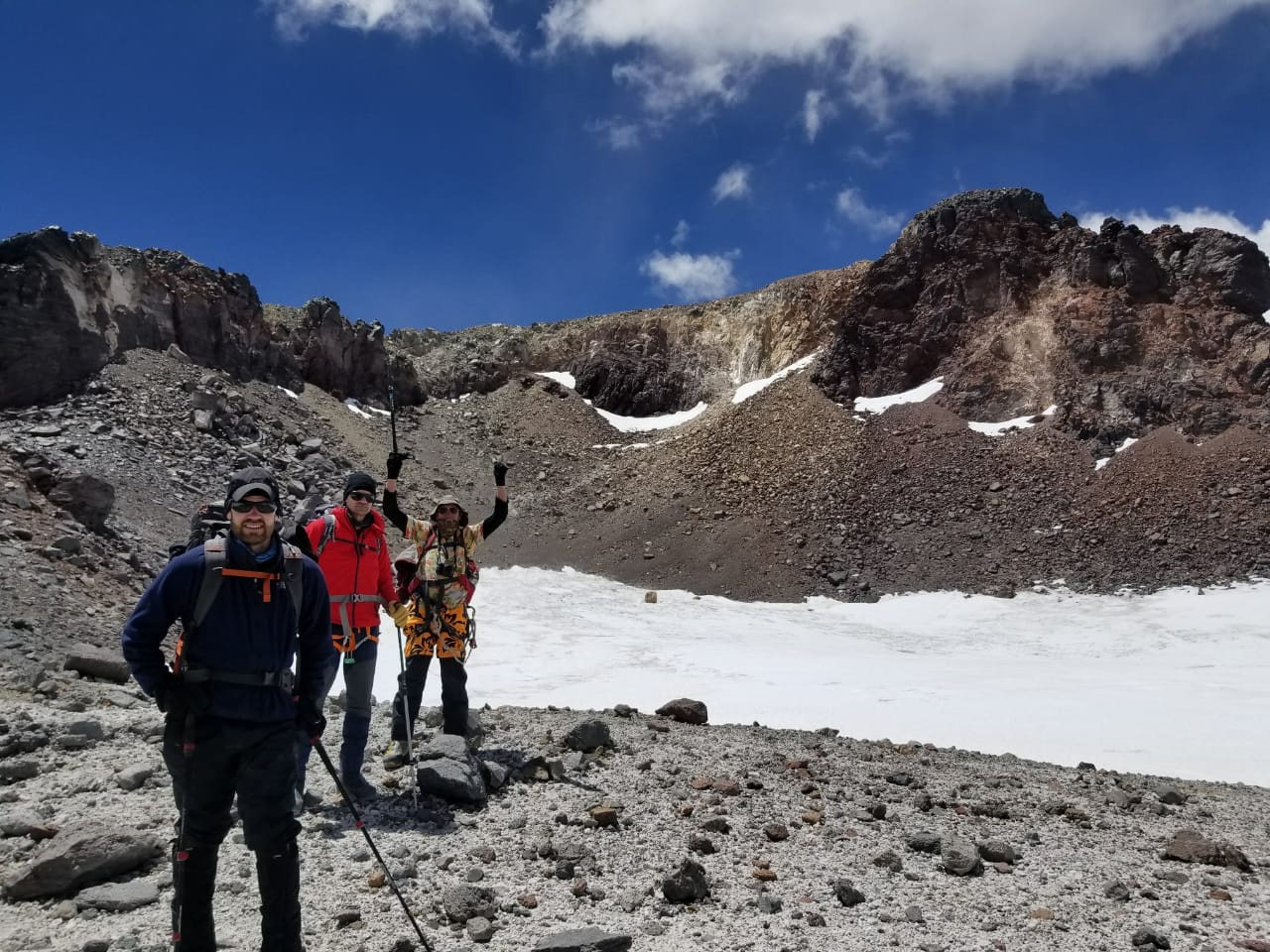
- Day 1
- Fly to Santiago
Leave your home for Chile, arriving in Santiago (1,870’/570m) in the evening. Our guides will pick you up and bring you to the hotel.
- Day 2
- Transport to Santa Rosa Lake
After an early breakfast at the hotel, we will fly to Copiapó. From Copiapó we will drive (5 hrs) to Santa Rosa Lake. From here, we have the option for a scenic hike near the lake or a visit to the salt flats and flamingo sightseeing. After touring for half the day, we spend the afternoon preparing for our climb of Ojos del Salado, practicing fixed line techniques, and organizing gear. We spend the night at our campsite (11,811’/3600m).
- Day 3
- Overnight at Laguna Verde
From our campsite in Santa Rosa, we will take a 2 hr Jeep ride to Laguna Verde (2hrs). Climb Mulas Muertas in the afternoon (8 to 10hrs roundtrip to 18,897’/5760m). We overnight in our campsite (13,780’/4200m).
- Day 4
- Rest day at Basecamp
Today we drive (2 hrs) to Basecamp at 16,732’/5,100m, continue practicing our skills, and let our bodies further acclimatize. We spend the afternoon resting, hydrating, eating, and getting to bed early before our push to the summit of Ojos del Salado.
- Day 5
- Summit Day
After a midnight wake-up call, we begin our climb scrambling a rock ridge to the upper glacier. From there moderate slopes lead to another steep headwall. Often icy, this slope will require all of our climbing techniques to make it to the top. From the summit (22,615’/6893m), we descend to basecamp for a celebratory evening.
- Day 6
- Extra Weather Day
Extra weather day
- Day 7
- Extra Weather Day
Extra Weather Day
- Day 8
- Transfer to Copiapó
Transfer to Copiapó – Today we sleep in, eventually waking to the smell of fresh coffee. When we are ready, we return to Copiapó for dinner, and we will fly back to Santiago around 10pm. We spend the night in a hotel in Santiago.
- Day 9
- Last Day
Today, we pack up and say our farewells.
Our Ojos Del Salado Guides
Ojos Del Salado Equipment List
 Hat
HatBring your favorite baseball hat for shelter from the sun. No white under the brim – the reflection off of it from the sun is blinding.
Recommended: Black Diamond 5-Panel Synthetic Cap
 Beanie
BeanieA comfortable, warm well-fitting hat that covers your ears. Make sure that one of your hats fits under a helmet.
Recommended: Black Diamond Levels Beanie
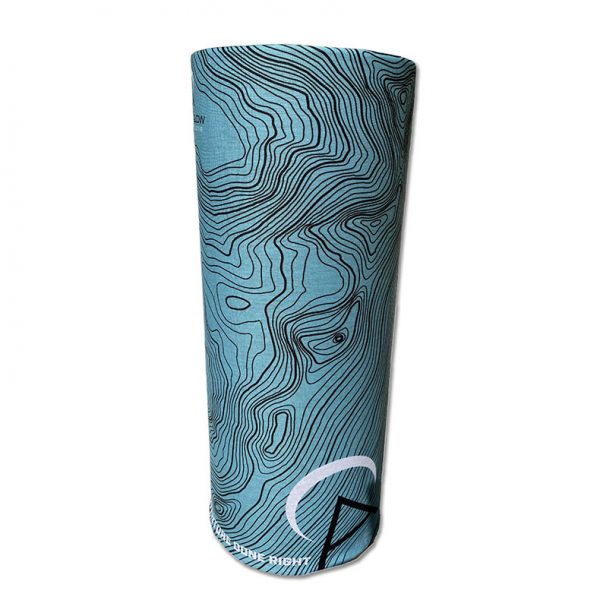 Neck Gaiter (Buff)
Neck Gaiter (Buff)A multi-purpose neck gator that can also be worn under your hat. Make sure that it covers as much skin as possible and yet is still comfy.
Recommended: Alpenglow Buff
 Balaclava
BalaclavaWe recommend a tight-fitting balaclava that is worn under your hat. Make sure that it covers as much skin as possible, but is comfortable enough to wear for hours.
Recommended: Black Diamond Coefficient LT Balaclava
 Sunglasses
SunglassesMust have dark lenses. Minimal light should come in below, above, or around the sides of the lenses.“Wrap” style is best. Ventilation is important and a retainer strap is very useful (Chums or Croakies).
Recommended: Vuarnet Glacier 01
 Goggles
GogglesThese will be worn on stormy or windy days. Make sure you are getting a snug fit with lenses for bright sun. Ventilation and anti-fog features are desired.
Recommended: Vuarnet Everest Goggles
 Liner Gloves
Liner GlovesThese gloves keep the inside of your mitts or other gloves from accumulating sweat on the inside and turning inside out when you take them off, as well as provide additional insulation.
Recommended: Black Diamond Midweight Wool Liners
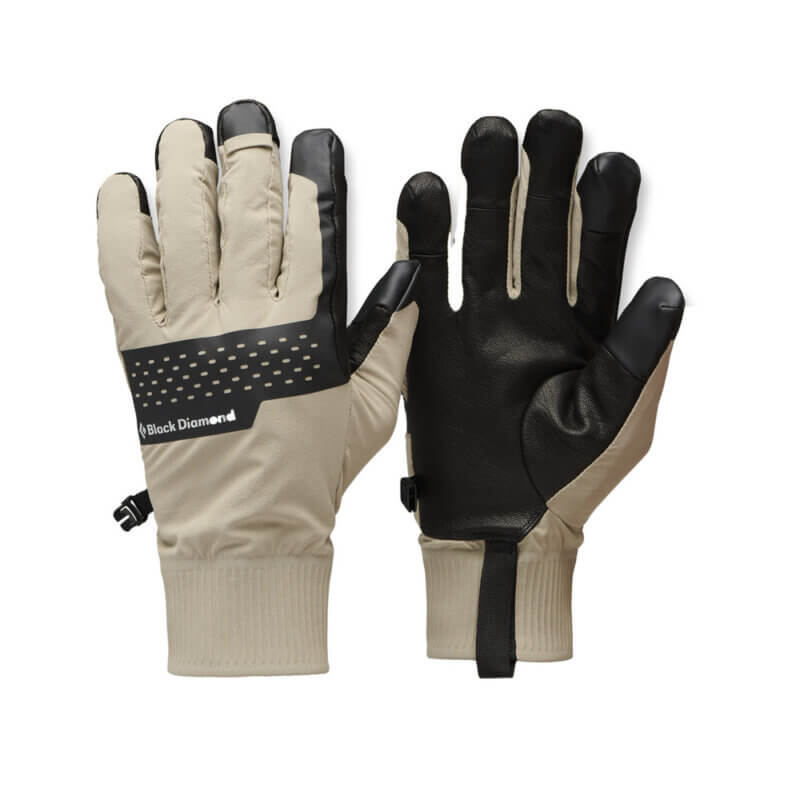 Lightweight Gloves
Lightweight GlovesAll-around gloves for mountaineering, backcountry skiing, and hiking. These gloves (and similar options) are warm, wind-resistant, durable and have a sure grip. You will rarely take these gloves off. They should be snug-fitting, and have some sort of reinforced palm.
Recommended: Black Diamond Alpine Softshell Gloves
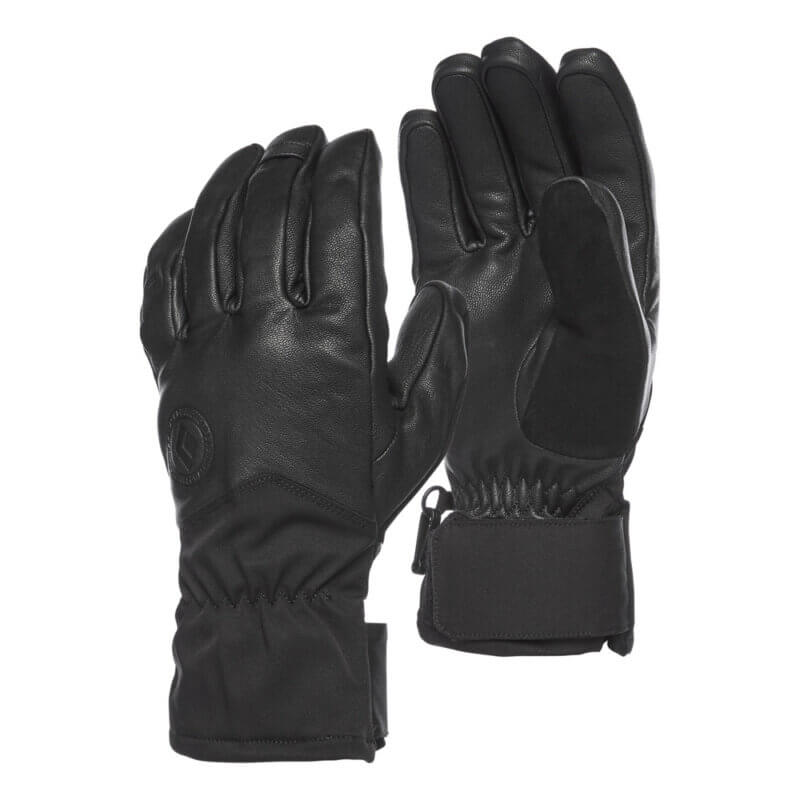 Midweight Gloves
Midweight GlovesThese gloves should be full GORE-TEX®, and insulated. These will be the workhorse glove for any expedition.
Recommend: Black Diamond Tour Gloves
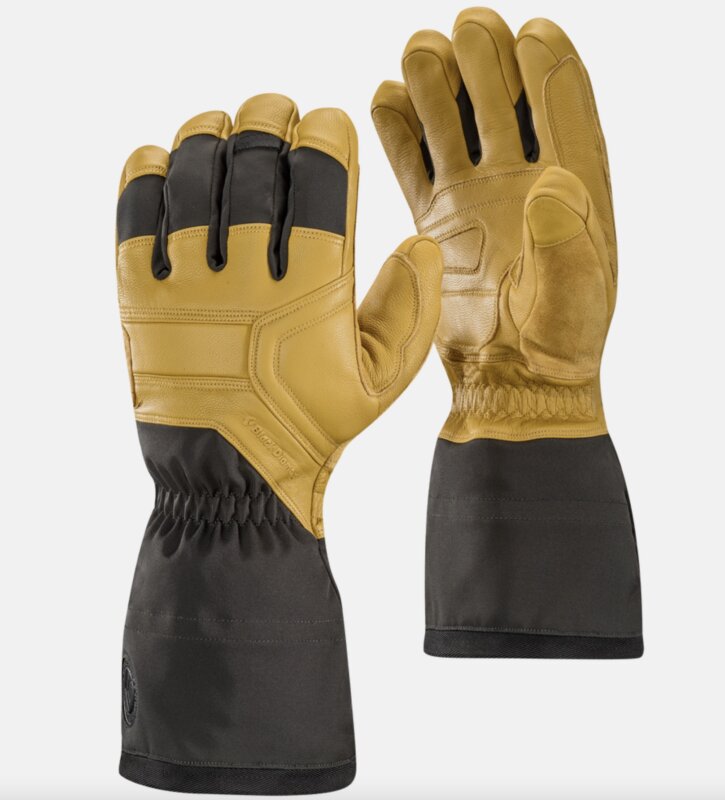 Heavyweight Gloves
Heavyweight GlovesThese gloves should be full GORE-TEX®, with a removable fleece liner (so you can take the liner out and dry it at night). These gloves are used at higher altitudes and are needed to keep your hands dry, and warm. Over the cuff style is desired.
Recommended: Black Diamond Guide Gloves
 Big Mountain Mitts
Big Mountain MittsThese mittens should be warm and be sized to wear over either a liner glove or a windstopper glove. Down mittens are not required. You should choose a pair that allows you to still operate locking carabiners.
Recommended: Black Diamond Absolute Mitts
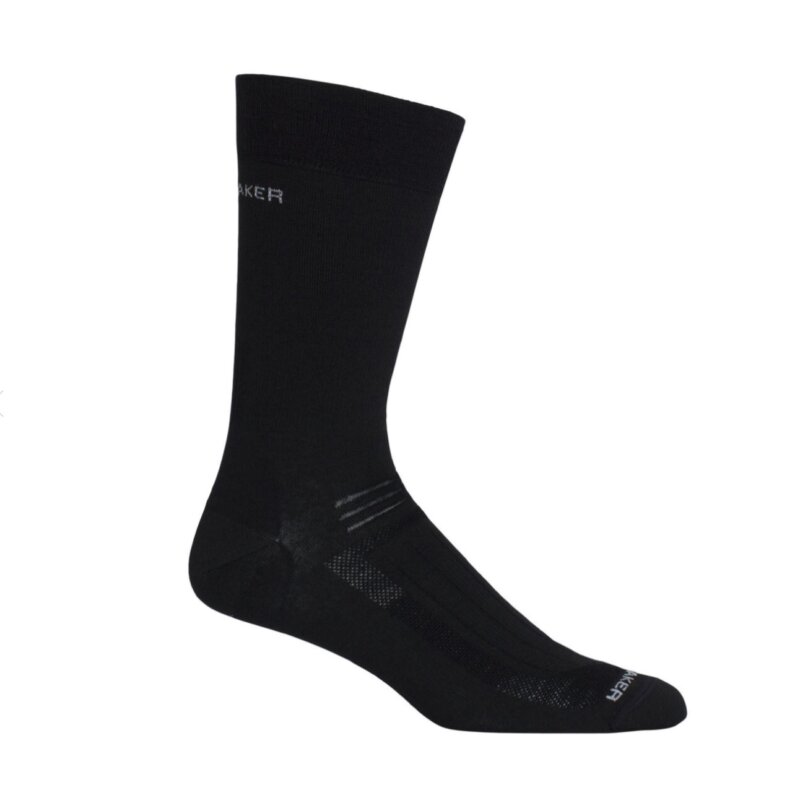 Liner Socks
Liner SocksA super-thin wicking sock that repels moisture. Liner socks help to reduce the likelihood of blisters. The socks should be thin wool, nylon, or Capilene®. NO COTTON
Recommended: Ice Breaker Merino Liner
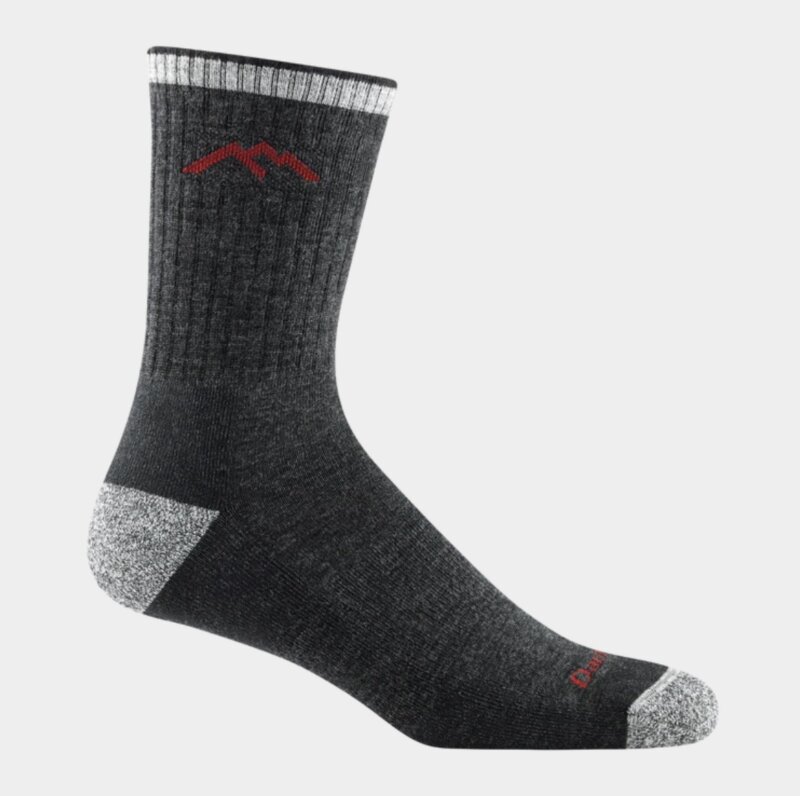 Hiking Socks
Hiking SocksYour everyday sock, good for day hikes, trekking, and in-town. It’s good to bring several pairs of these socks. NO COTTON.
Recommended: Darn Tough Hiking Sock
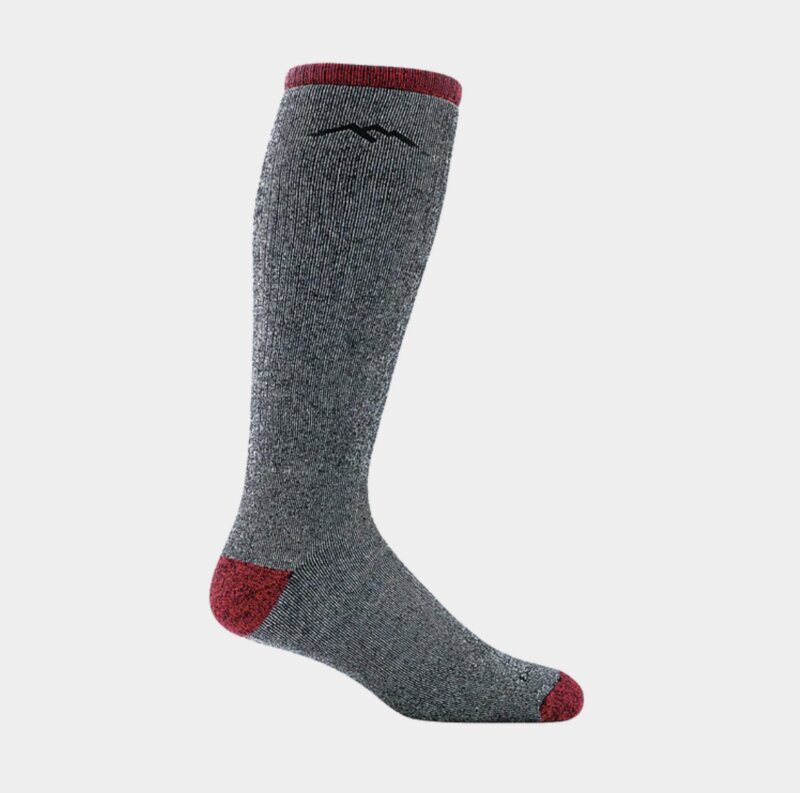 Warm Socks
Warm SocksA wool synthetic blend. Pure rag wool socks are not nearly as effective in wicking moisture or retaining their shape and reducing blisters. Bring a few pairs of these socks. NO COTTON.
Recommended: Darn Tough Mountaineering Sock
 Hiking Shoes
Hiking ShoesThese light to mid-weight shoes are for everyday use. The ideal shoe is comfortable to wear for multiple days and scrambles decently on rock. A Gore-tex lined shoe stays drier when hiking in rain or snow.
Recommended: La Sportiva Bushido
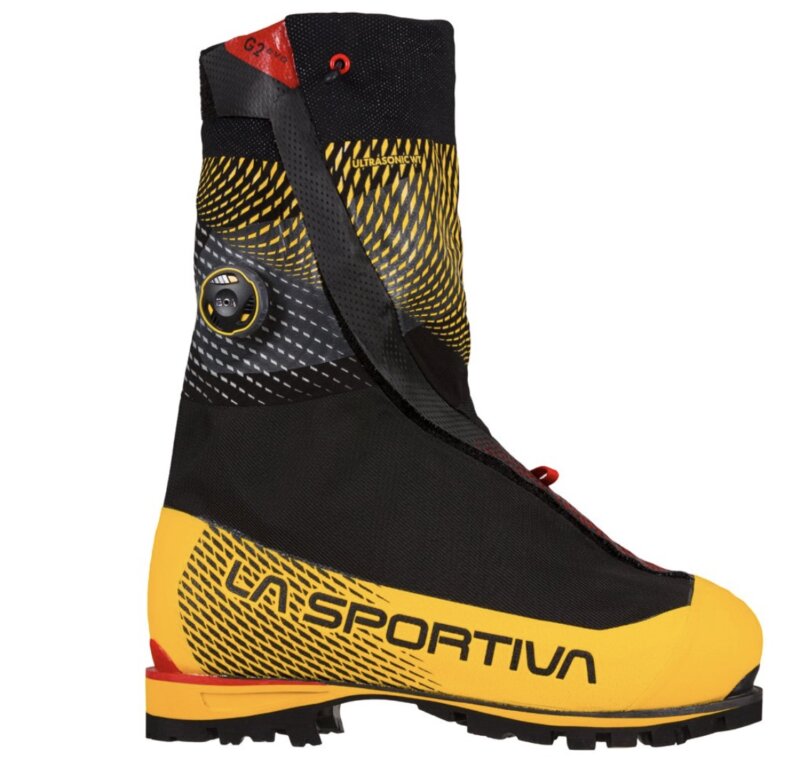 Mountaineering Boots (6,000m – 7,000m)
Mountaineering Boots (6,000m – 7,000m)Should be double boots that have a stiff sole and accept a step-in crampon. The boots should be comfortable, have adequate wiggle room for your toes, and your heel should not lift more than 1/8th of an inch when walking.
Recommended: La Sportiva G2 Evo
 Down Booties
Down BootiesYou’ll love having a warm, comfortable shoe to slip into when tent-bound. These are optional, but nice to have.
Recommended: Western Mountaineering Flash Down Booties
 Waterproof Gaiters
Waterproof GaitersGORE-TEX® or Schoeller® calf- high gaiters, insulated supergaiters are recommended. *Gaiters are not necessarily needed if your pants and/or boots have built-in gaiters. However, if your pants have wide leg openings, then you could have issues with crampons snagging your pants.
Recommended: Outdoor Research Expedition Crocodile Gaiters (required if your boots do not have integrated gaiters)
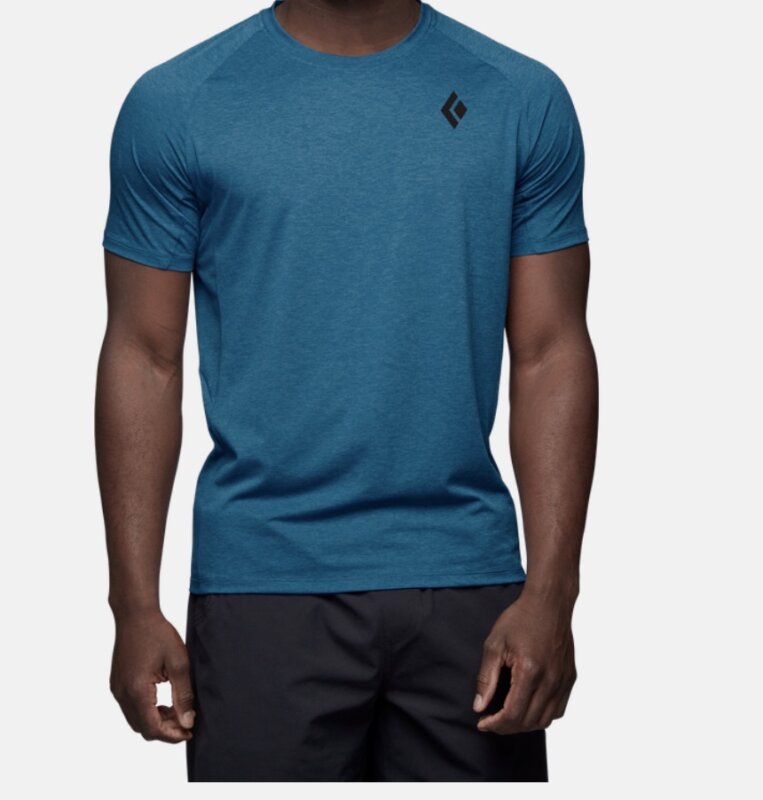 Lightweight Top
Lightweight TopUltra-light base layer that effectively wicks moisture away from your body and is breathable. Quick-dry is important as well. One light-colored shirt is recommended for extremely sunny days.
Recommended Men’s: Black Diamond Lightwire Short Sleeve
Recommended Women’s: Black Diamond Lightwire Short Sleeve
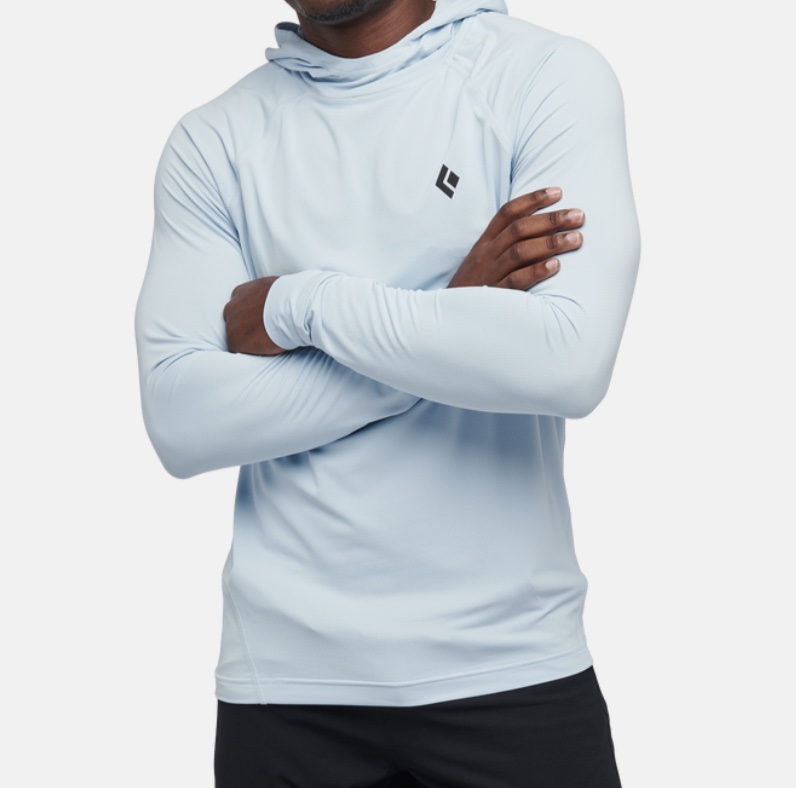 Sun Hoodie
Sun HoodieLightweight, long-sleeve sun hoody that is great for protecting from the sun.
Recommended Men’s: Black Diamond Alpenglow Hoody
Recommended Women’s: Black Diamond Alpenglow Hoody
 Lightweight Baselayer Top
Lightweight Baselayer TopA long sleeve base layer that is fitted, lightweight and quick drying. Make sure it is long enough to tuck in.
Recommended Men’s: Black Diamond Men’s Solution 150 Merino Crew
Recommended Women’s: Black Diamond Women’s Solution 150 Merino Crew
 Mid-Weight Warm Layer Top
Mid-Weight Warm Layer TopThis mid-layer will be worn over your base layer most of the trip.
Recommended Men’s: Black Diamond Men’s Coefficient LT Quarter Zip Pullover
Recommended Women’s: Black Diamond Women’s Coefficient LT Quarter Zip Pullover
 Mid-Weight Puffy Jacket
Mid-Weight Puffy JacketA simple, lightweight puffy jacket. This item is good for layering systems and staying warm. We recommend 800-fill down that is packable and resists inclement weather.
Recommended Men’s: Black Diamond Approach Down Hoody
Recommended Women’s: Black Diamond Approach Down Hoody
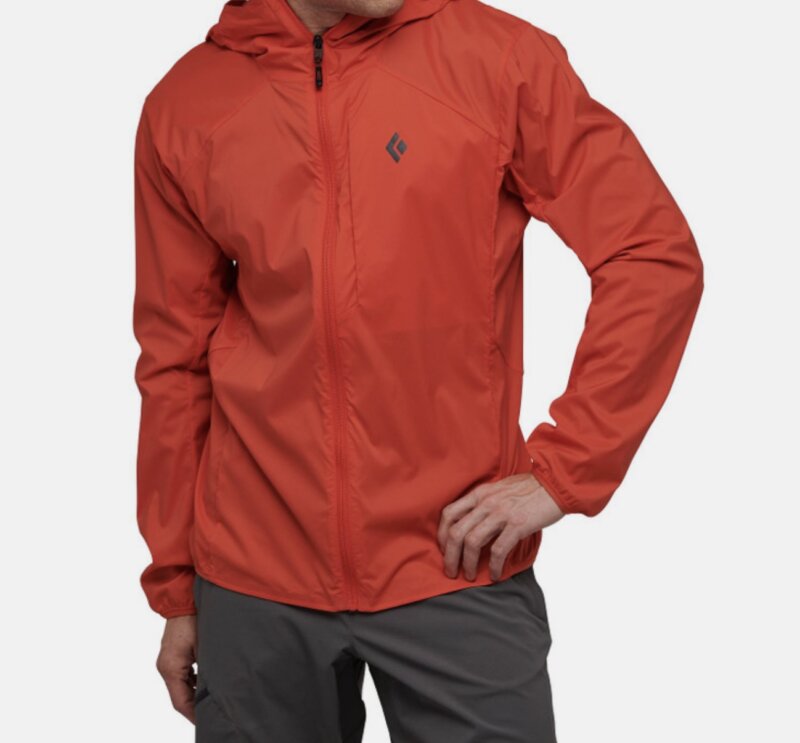 Soft Shell Jacket
Soft Shell JacketMore breathable than Gore-tex, these soft shell jackets block wind and light precipitation and are great as an outer layer and warm layer under your parka.
Men’s Recommended: Black Diamond Alpine Start Hoody
Women’s Recommended: Black Diamond Alpine Start Hoody
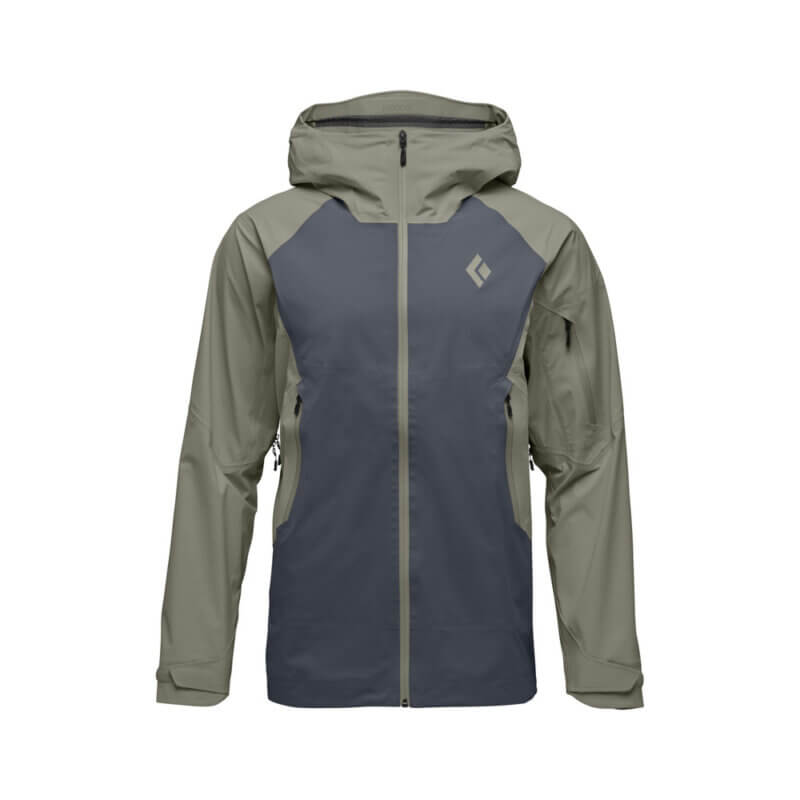 Hard Shell Jacket
Hard Shell JacketA lightweight, waterproof and breathable jacket WITH A HOOD that can withstand extreme weather conditions. Make sure you have pit-zips and if you are using an old jacket, re-waterproof it.
Recommended Men’s: Black Diamond Recon LT Stretch Shell
Recommended Women’s: Black Diamond Women’s Recon LT Stretch Shell
 Down Parka
Down ParkaA puffy jacket with a hood that will keep you warm during the coldest of conditions. The higher the quality down, the better (800-fill is best). Although this jacket should be lightweight, it should have a decent thickness and be closer to the 2 lb. range than your typical mid-weight jacket.
Recommended Men’s: Black Diamond Mission Down Parka
Recommended Women’s: Black Diamond Mission Parka
 Lightweight Baselayer Bottoms
Lightweight Baselayer BottomsFitted and quick drying. This piece will be a base-layer that will get you through a wide range of temperatures. This can be 3/4 length bottoms if preferred.
Recommended Men’s: Black Diamond Solution 150 Merino Baselayer
Recommended Women’s: Black Diamond Solution 150 Merino Baselayer
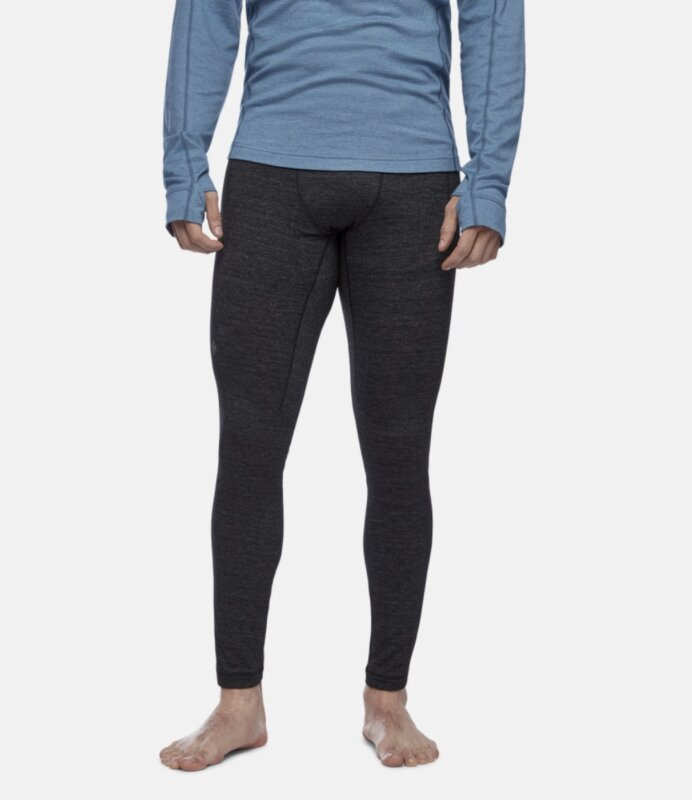 Mid-Weight Baselayer Bottoms
Mid-Weight Baselayer BottomsFitted, mid-weight and quick drying, this baselayer (or midlayer) will be suitable for ski tours to alpine ascents.
Recommended Men’s: Black Diamond Men’s Coefficient LT Pants
Recommended Women’s: Black Diamond Women’s Coefficient LT Pants
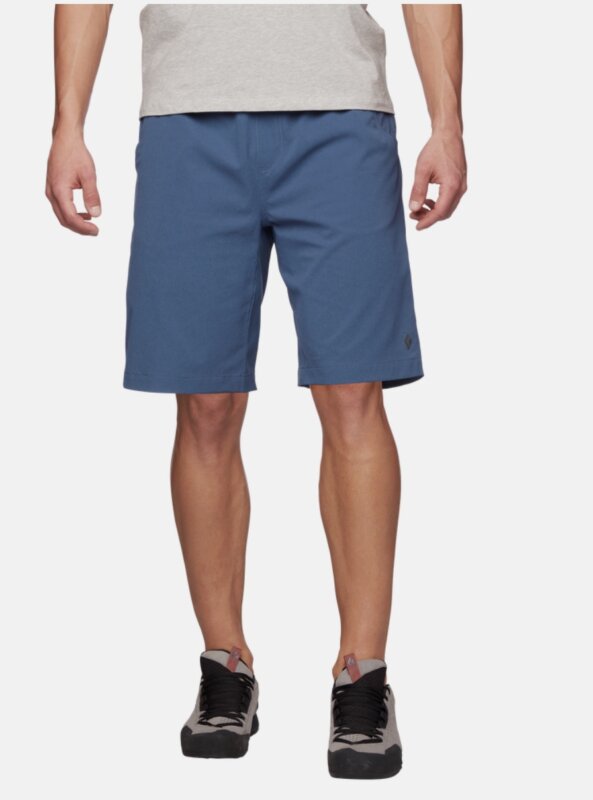 Quick Dry Shorts
Quick Dry ShortsThrow these on under other layers for when the sun begins to beat, or you want to stretch / relax in Basecamp. Lightweight, durable and comfortable. NO COTTON.
Recommended Men’s: Black Diamond Sierra Shorts
Recommended Women’s: Black Diamond Sierra Shorts
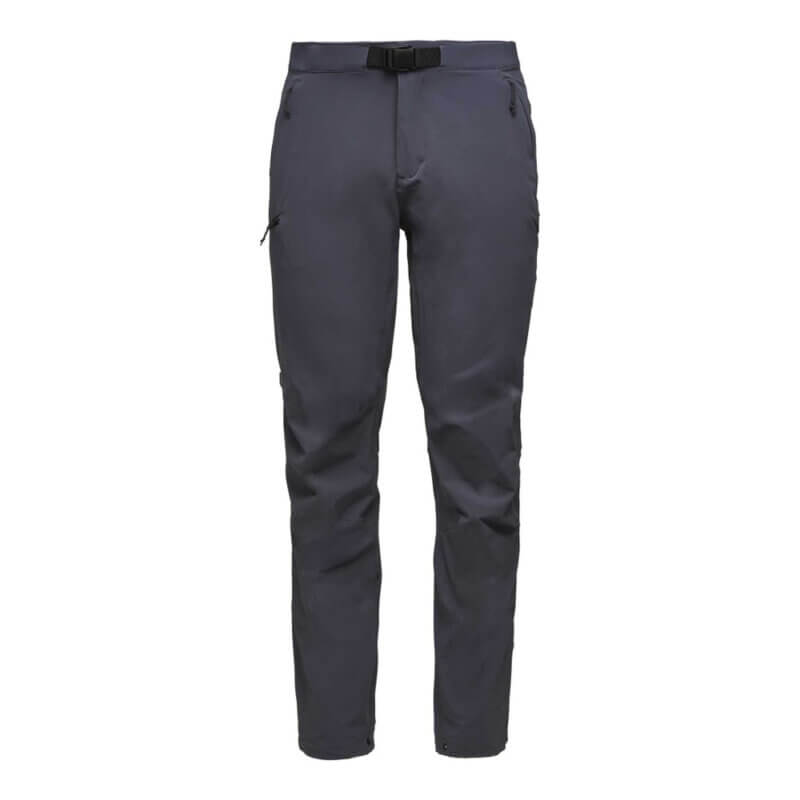 Soft-Shell Alpine Pant
Soft-Shell Alpine PantYou will spend most of your days in these pants. They should be breathable + water-resistant.
Recommended Men’s: Black Diamond Men’s Alpine Pants
Recommended Women’s: Black Diamond Women’s Alpine Pants
 Hard Shell Climbing Pant
Hard Shell Climbing PantYour waterproof bottom layer for extreme weather days. Make sure you have water-resistant zippers, crampon patches + good pockets.
Recommended Men’s: Black Diamond Men’s Fineline Stretch Full Zip Pants
Recommended Women’s: Black Diamond Fineline Stretch Full Zip Pants
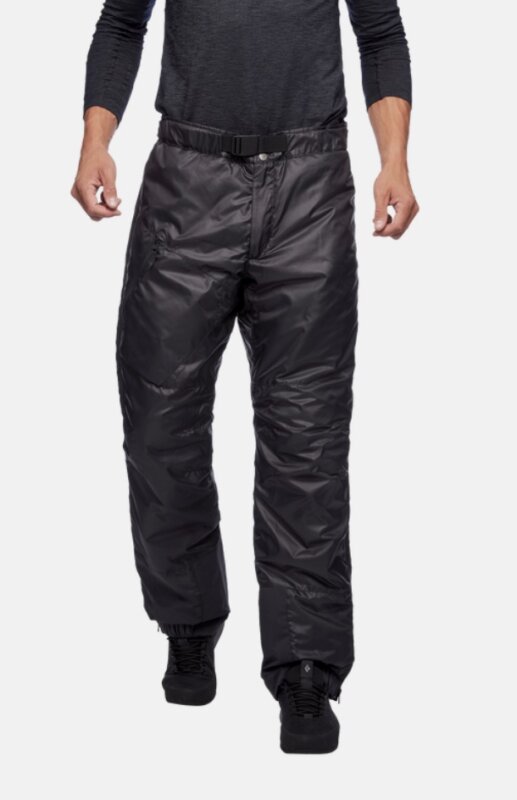 Insulated Pant
Insulated PantFull-length side zippers are recommended, for throwing on top of all of your layers.
Recommended: Black Diamond Belay Pants
 Duffel Bags
Duffel Bags2 Duffel Bags – At least one bag should be extremely durable, waterproof, and big – between 90L and 120L. You should feel comfortable leaving it in a puddle for several hours. Remember dry clothes are hot commodities in the mountains! Large enough to fit everything you own, plus what you anticipate buying. Two duffel bags are necessary to fit all your equipment for travel (we don’t recommend checking your climbing pack separately, best is to put all gear and climbing pack into your duffel).
Once in country, you can consolidate your gear into one duffel and your climbing pack. You can leave the second duffel with city clothes and other non-necessary items behind in a locked and secure location that your guide will arrange for you.
Note: For ski expeditions such as the Ecuador Ring of Fire, you can replace one of these duffel bags with a ski/splitboard bag.
Recommended: Black Diamond Stonehauler 120L
 Day Pack
Day PackMid-size pack for city days and trekking. Streamlined, neat and lightweight (10-20 liters).
Recommended: Black Diamond Bullet 16 Pack
 Climbing Pack: 50-60L
Climbing Pack: 50-60LInternal frame pack that is between 50 and 60 liters. Either purchase a matching pack cover, or use garbage bags as liners. Make sure the pack is fitted to YOUR body.
Recommended: Black Diamond Mission 55L Pack
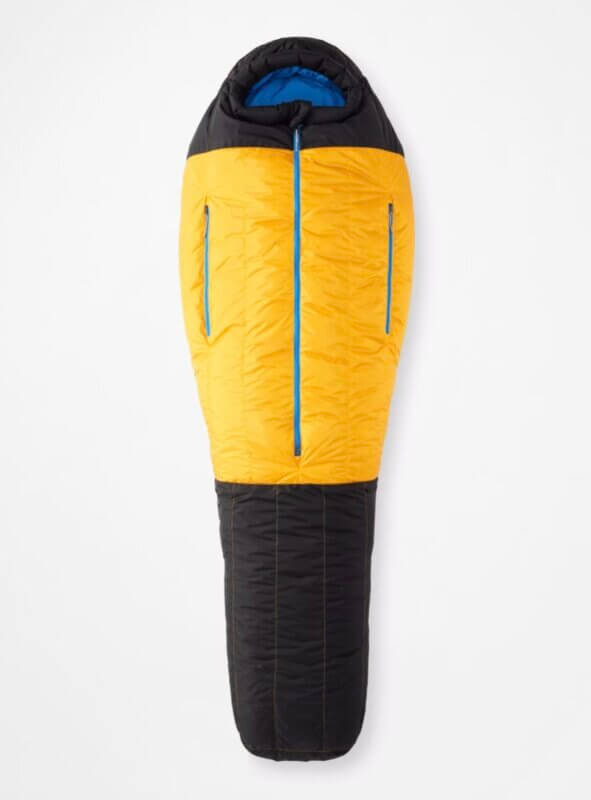 Sleeping Bag (-20°)
Sleeping Bag (-20°)Rated to -20º F. Choose an 800+ Fill Premium Goose Down bag. Make certain that the sleeping bag is the right length. DON’T FORGET A COMPRESSION SACK FOR THE SLEEPING BAG.
Recommended: Marmot Col -20°
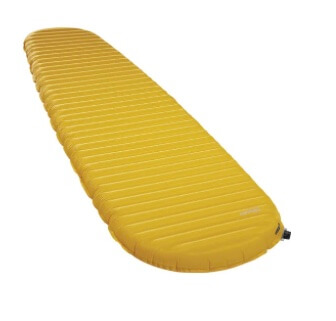 Inflatable Sleeping Pad
Inflatable Sleeping Pad72-inch long inflatable pad required. Make sure you also purchase and bring a repair kit + bag for the sleeping pad.
Recommended: NeoAir® XLite™ NXT Sleeping Pad
 Foam Sleeping Pad
Foam Sleeping PadFoldable foam sleeping pad for sleeping and using as a sit-pad.
Recommended: Thermarest Z-Lite Sleeping pad
 Hydration System
Hydration SystemShould carry 70-100 ounces. Must be durable and have a reliable closure system. Recommended: MSR Dromlite 2L with Hydration Tube
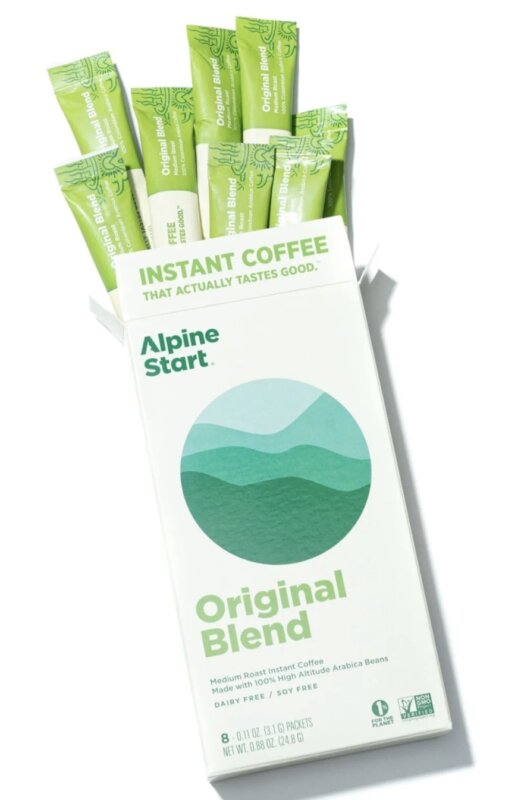 Coffee
CoffeeWhile Alpenglow provides hot drink options every morning, it can be nice to have your own on hand any time you need a boost. With hot water always readily available, having instant coffee packets can give you the energy you need after a long day in the mountains!
Recommended: Alpine Start Original Blend Instant Coffee
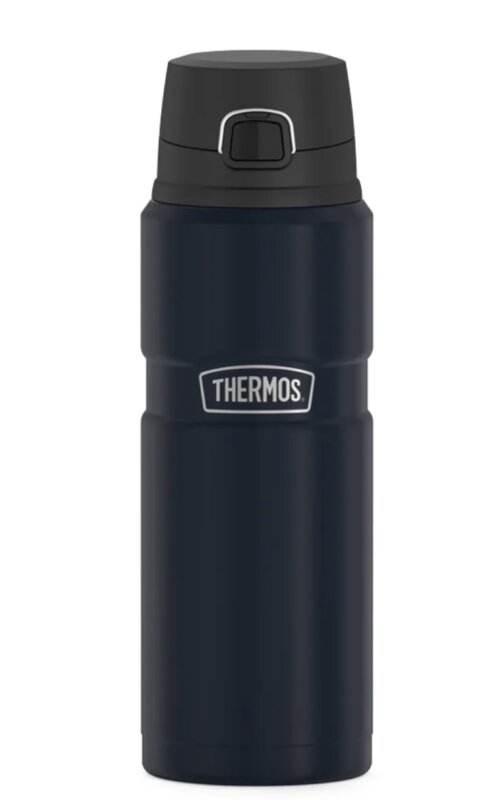 Thermos
ThermosA fully insulated thermos is optional but recommended for warm drinks that help with comfort, hydration, and safety on cold days in the mountains.
Recommended: Thermos STAINLESS KING™ DRINK BOTTLE 24OZ
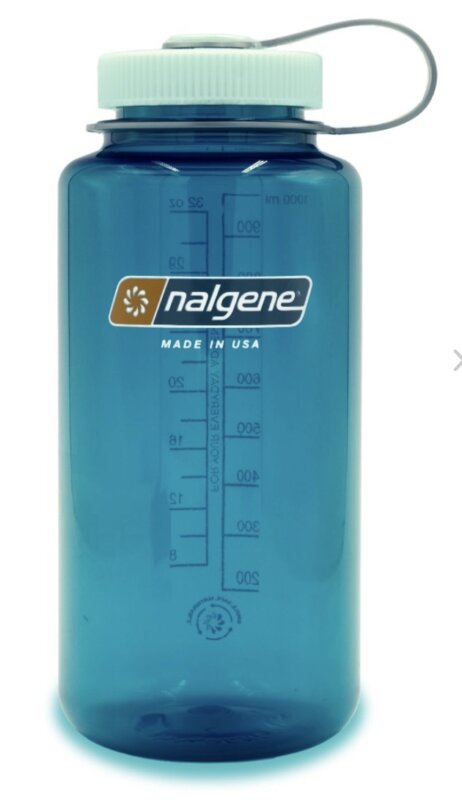 Two 1L Nalgene Bottles
Two 1L Nalgene BottlesTwo 1 Liter Wide Mouth Nalgene bottles.
Recommended: Nalgene 1 L wide mouth
 Compressible 1-1.5L Bottle
Compressible 1-1.5L BottleWide mouth compressible 1-1.5 liter bottle. Optional but strongly recommended. Often used as a designated pee bottle.
Recommended: Nalgene Flexible Cantene
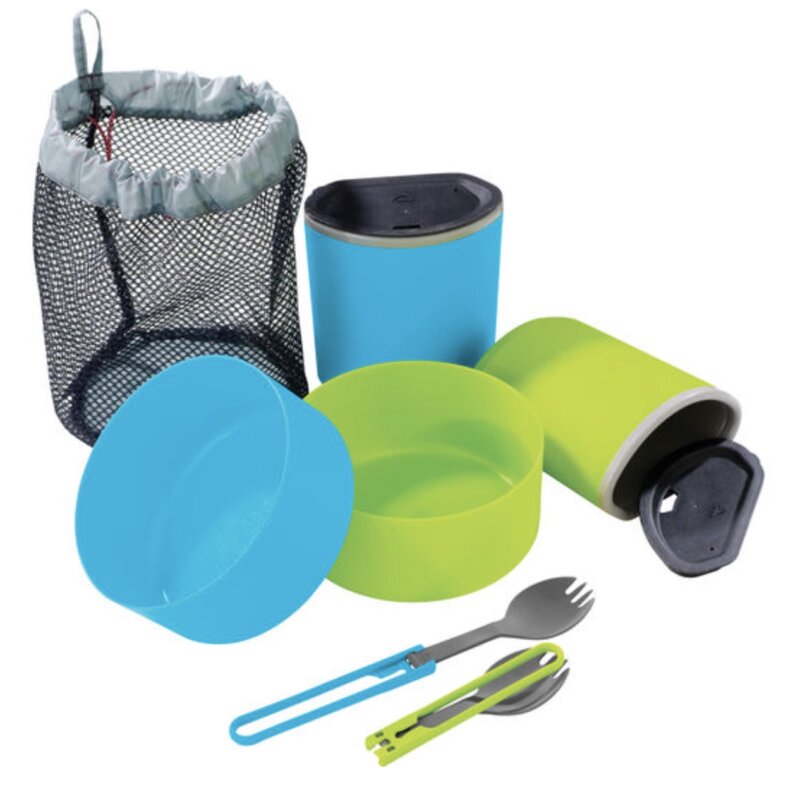 Plastic Bowl, Mug, and Spoon
Plastic Bowl, Mug, and SpoonA lightweight and compact cookware setup. You’ll want a plastic bowl, mug and spoon.
Recommended Kit: MSR 2-Person Mess Kit
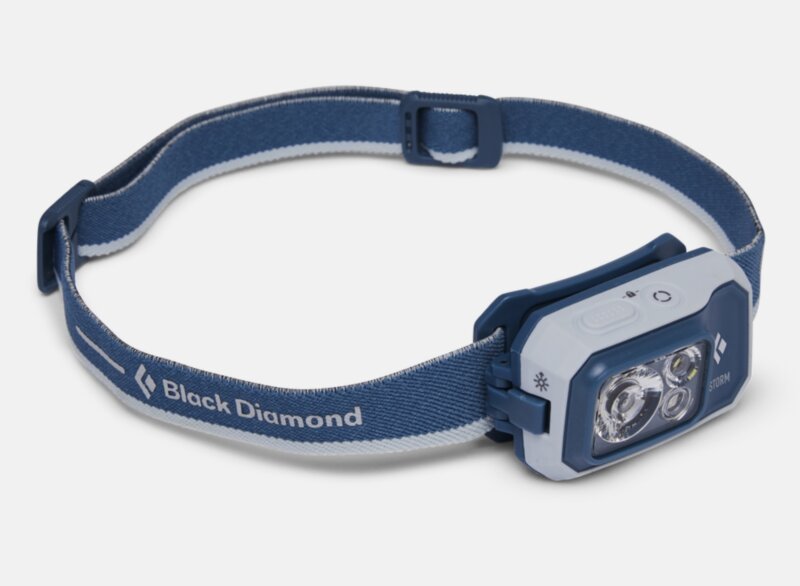 Headlamps
HeadlampsPlease bring two L.E.D. Headlamps. One will be intended as a lightweight backup. L.E.D. headlamps are required. Make sure they have 3+ bulbs. Bring extra batteries. We highly recommend a tilting lamp.
Recommended: Black Diamond Storm 450
Backup Headlamp Recommended: Black Diamond Deploy 325
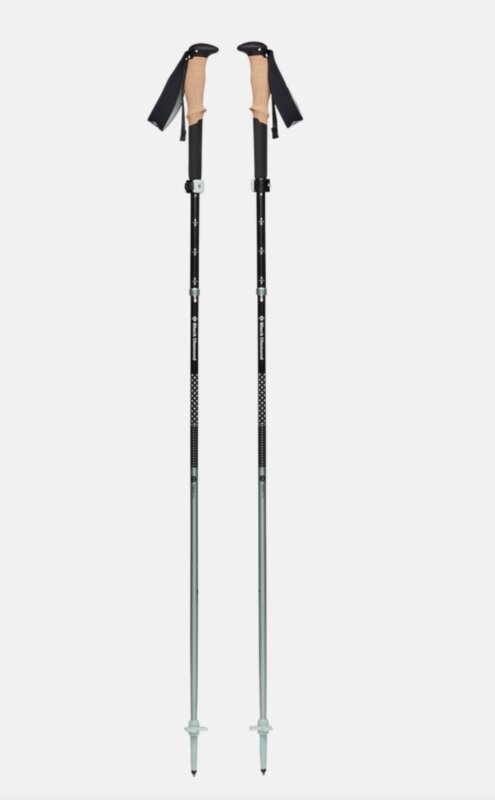 Trekking Poles
Trekking PolesMake sure that they are durable, lightweight + easily adjustable. These are optional, but highly recommended.
Recommended: Black Diamond Pursuit FLZ Trekking Poles
 Helmet
HelmetAn easily adjustable lightweight helmet that fits with hat and Balaclava. Make sure this is a climbing-specific helmet. *Climbing helmets are also available to rent (for our introductory climbing courses) at no charge from Alpenglow Expeditions on a first-come, first-serve basis.
Recommended: Black Diamond Vapor Helmet
 Mountaineering Harness
Mountaineering HarnessMust have belay loop, gear loops and adjustable leg loops so that you can layer up underneath it. Easy to pack, lightweight + comfortable. *Harnesses are also available to rent (for our introductory climbing courses) at no charge from Alpenglow expeditions on a first-come, first-serve basis.
Recommended: Black Diamond Couloir
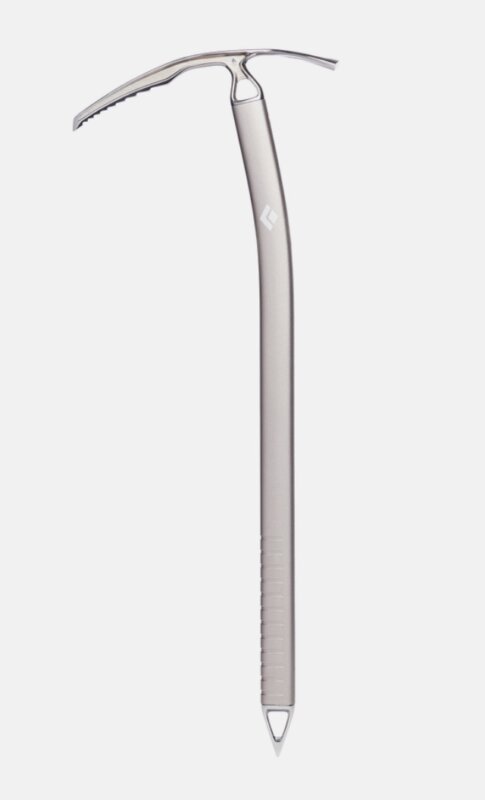 General Mountaineering Axe
General Mountaineering AxeOne non-technical climbing axe. The tool should be approx. 55cm- 65cm long and comfortable to hold. *Ice axes are also available to rent (for our introductory climbing courses) at no charge from Alpenglow expeditions on a first-come, first-serve basis.
Recommended: Black Diamond Raven Pro Ice Axe
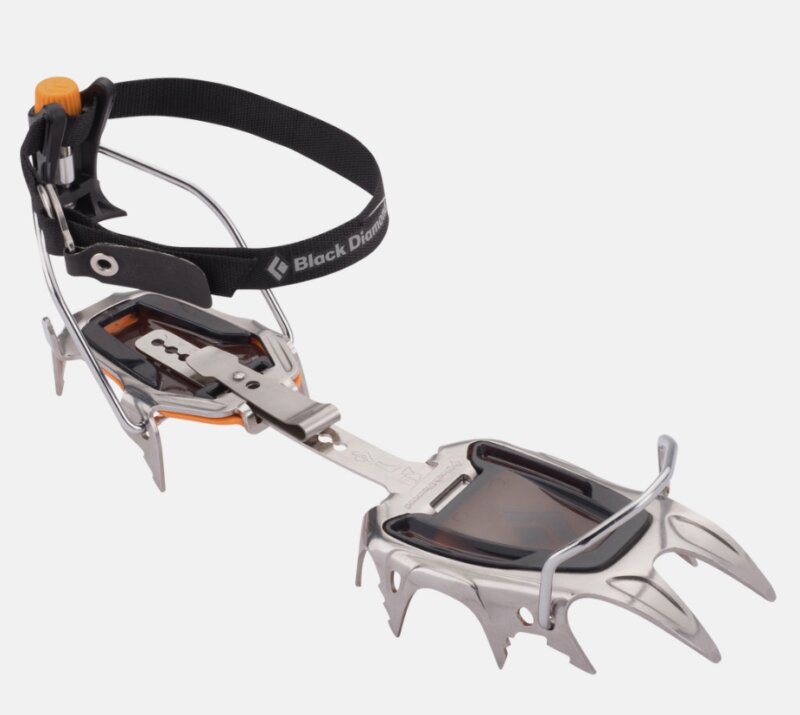 Mountaineering Crampons
Mountaineering CramponsSteel crampons with anti-balling plates are required (so that snow does not build-up in the base of your foot). Make sure that crampons have a heel bail and that they fit snugly on your ski or snowboard boots. Crampons are available to rent (for our introductory climbing courses) at no charge from Alpenglow Expeditions on a first-come, first-serve basis.
Recommended: Black Diamond Sabretooth Crampons
 Locking Carabiner (2)
Locking Carabiner (2)Small, lightweight locking carabiners are best.
Recommended: Black Diamond LiteForge Screwgate
 Non-locking Carabiner (2)
Non-locking Carabiner (2)Small, lightweight small carabiners are best, wire-gates are fine.
Recommended: Black Diamond LiteWire Carabiner
 Accessory Cord
Accessory Cord5m of 6mm nylon accessory cord.
Recommended: Sterling Accessory Cord
 Belay Device
Belay DeviceLight, easy to use + simple. Should have teeth/grooves for skinny ropes.
Recommended: Black Diamond ATC Alpine Guide Belay Device
 Miscellaneous Items
Miscellaneous Items- Passport (with visa, if necessary)
- 2 luggage locks (TSA compliant)
- Non-cotton underwear
- Wag bags, 1 per night camping as to leave no trace
- Day Pack (optional) – Mid-size for city days/trekking
- Stuffsacks: assorted sizes, for organizing your clothes and gear
- Sunscreen: SPF 30 (or higher)
- Lip balm with SPF 15 (or higher)
- Personal first-aid kit (Band-aids, Ibuprofen, Cough Drops, Moleskin, Pepto-bismol, Imodium, Personal Medications, Saline nasal spray)
- Toiletries
- 3-4lbs of Snack food (a variety of snack food, some whole food, some bars, some gels)
- Hand Warmers
- Flip flops or sandals/crocs – for showers, lounging, etc
- Small Pack Towel
- Face Mask
- Hand Sanitizer
- Knife
- Mountain Face Mask (optional)
- Headphones
- Powerbank (6-10K mAh good for 2-3 phone charges, weighing under 8oz)
Ojos Del Salado Expedition Questions
Yes. Please reach out to our team with the details of your dietary restrictions and we’ll set you up for success.
We require Rescue Insurance on all of our international expeditions. Rescue insurance will help cover costs in the event that you need to be rescued off the mountain (Ex: Helicopter/medical evacuation). Travel Insurance (which we strongly recommend) can cover issues that would cause you to cancel your trip in advance, like illness. We do recommend Global Rescue who does offer a Comprehensive Travel Protection option to your required Rescue (Evacuation) Insurance.
Expedition doctor, Monica Piris, has been on fourteen 8,000-meter peak expeditions. While Dr. Piris does not travel with our team on all expeditions, she is in 24 communication with our expedition leaders. Dr. Piris also works with each member on his or her pre-acclimatization program.
While no outdoor adventure can be completely free of risk without losing the essence of the activity, hiring a professional guide is a fantastic way to manage and mitigate this risk. Activities like skiing and climbing have what we call “inherent risk”, which can be defined as a risk that cannot be completely mitigated by a professional. That is part of playing in the mountains. We encourage you to reach out to the office if you would like to discuss this in more detail.
Climbers must be in excellent physical shape to join this expedition. This is perhaps the most important aspect of high-altitude climbing, and cannot be stressed enough. Regular, challenging exercise for many months in advance of departure is the only way to gain the necessary level of fitness that is needed on big peaks. We highly recommend a structured training regime with a gym or personal trainer to assist you in preparing for climbing at altitude. Please contact us for more information on physical training.
If the team is able to summit early, the guides will be able to take you to local tourist destinations such as Bahia Inglesa – a cozy beach town where you can eat traditional Chilean food, watch penguins, and hike along sand dunes.
THE COST OF YOUR TRIP INCLUDES YOUR LAND COSTS (EXCLUDING IN-TOWN MEALS). THIS INCLUDES:
All lodging according to itinerary, including double occupancy lodging while in town and group lodging in mountain huts.
Breakfasts in town, all meals while on the mountain
Group camping and climbing equipment
All park/climbing permits
Scheduled in-country transportation
Airport transfers
Certified guidesTHE COST OF YOUR TRIP DOES NOT INCLUDE:
Flights to/from the city where the expedition begins.
Additional nights in hotel outside of the itinerary
Airport taxes
Visas
In-town dinners
Immunizations
Tips for guides or local staff
Travel, rescue, or any other type of insurance
Hospitalization or evacuation costs
Single supplement charges
Excess baggage charges
Alcohol
Other personal expenses
Antigen/PCR Covid test cost
The costs of delays or changes to itinerary that are beyond the control of Alpenglow Expeditions or its agents are not included.When an expedition is more than 90 days out, we require a 20% deposit to guarantee your reservation. Within 90 days we require full payment.
We always consider customs. Custom trips make up more than 50% of our groups. Please reach out to learn more!
Aside from the technical gear that we are often able to provide on Introductory Courses (harness, helmet, ice ax, crampons), we strongly recommend bringing everything on the Equipment List. These kits have been dialed and tested by our guides for over 20 years; while you may not end up using everything you bring, weather variability in the mountains demands that we’re ready to dress for any and all conditions!
Cool opportunity to climb a big peak in a short period of time
“Climbing Ojos with Alpenglow was a cool opportunity to climb a big peak in a short period of time. The Atacama region was unique, and the climb itself was challenging though very doable. Guiding and logistics were top-notch.”
Joel F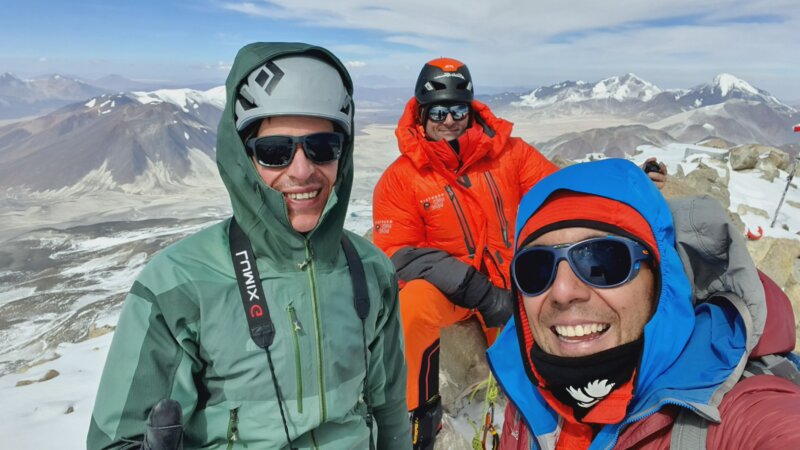
- 28.099722°N , 86.66°E Learn More
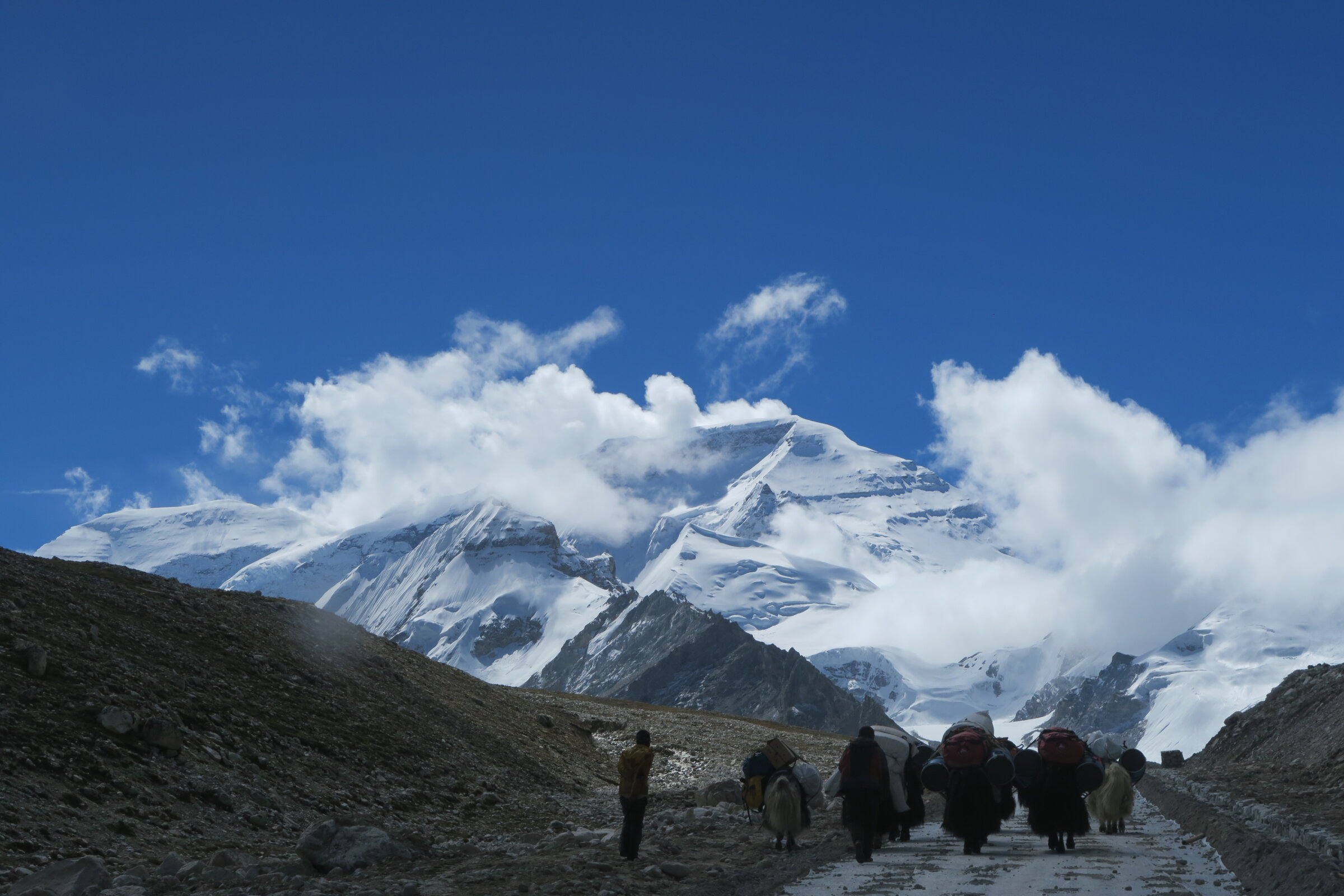
- 27.7172° N, 85.3240° E Learn More

- Learn More

- Learn More

